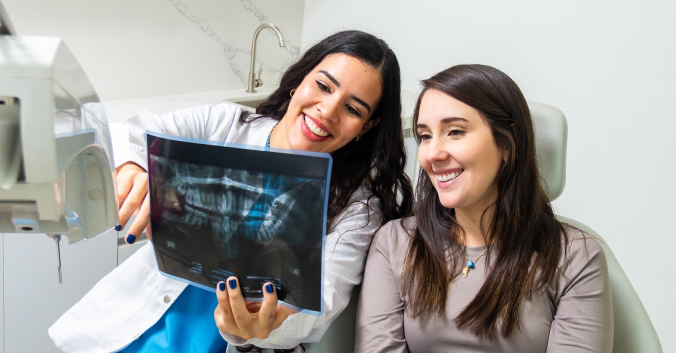
Why every dentist should advocate for regular oral cancer screenings
Oral cancer statistics¹ that’ll make your jaw drop
Did you know...
- Non-smokers under 50 are the fastest growing segment affected by oral cancer.
- 9,750 people are likely to be terminally affected by oral cancer this year.
- 43% of those diagnosed won’t survive beyond 5 years, likely due to late diagnosis.

The dentist’s role in HPV and oral cancer awareness
In the United States alone, HPV is the leading cause for 60% to 70% of oropharyngeal cancers that affect the back of the throat, including the tonsils and base of the tongue. It usually takes years after being infected with HPV for cancers to develop in the oropharynx. But due to lack of awareness, symptoms related to this disease are not addressed in time, leading to poor outcomes.
Help improve and even save patients’ lives:
- Education and awareness: Educate patients about the link between HPV and oropharyngeal cancers, emphasizing the importance of HPV vaccination.
- Promoting HPV vaccination: Advocate for HPV vaccination, especially for age-eligible patients, as it can prevent HPV-related cancers.
- Thorough exams: Conduct thorough oral examinations during routine check-ups to identify any suspicious lesions or abnormalities that may indicate potential signs of oral cancer.
- Early detection: Reinforce the importance of regular dentist visits and subsequent follow-up appointments with specialists to identify and treat potential cases at their earliest stages.
- Referral for further evaluation: If you suspect a patient may have oral cancer, you should immediately refer the patient to a specialist for further evaluation and diagnosis.
- Encouraging self-examination: Talk to patients about performing regular self-examinations of their mouths and seek prompt attention for any unusual changes.
- Addressing misconceptions: Help dispel myths and misconceptions about HPV and oral cancer, promoting accurate information and encouraging vaccination.
- Inter-profession collaboration: Work collaboratively with other healthcare professionals, such as physicians, to provide comprehensive care for patients with HPV-related cancers, and give them the best chance for recovery.
Want to learn more about this topic?
By contributing to a patient’s oral care journey, you may be playing a significant role in improving their overall health. Delta Dental is happy to support you and your practice with resources, informational updates and a strong peer network as you help provide better quality of care and life to the community you serve.
¹ Source link: https://aaoms.org/practice/promotional-materials/oral-cancer-awareness-month/
Recent posts
- Updated 2026 CDT codes are here
- Partner with us to improve the health outcomes of our shared members
- Say hello to our 2026 Medicare Advantage DHMO partners
- Say hello to our 2026 Delta Dental Medicare Advantage™ PPO partners
- Insights from Dr. Allen Edwards on oral cancer detection and prevention
- Create a PPO strategy for your dental practice
- Dr. Brian Hathcoat — how a career change and a commitment to service made a positive impact
- Menopause and the mouth: What our survey results are saying
- Ready, set, authenticate with multi-factor authentication
- Partners in care: Reduce patient grievances with our on-demand webinar
